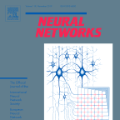This paper represents the first effort to explore an automated architecture search for hyperdimensional computing (HDC), a type of brain-inspired neural network. Currently, HDC design is largely carried out in an application-specific ad-hoc manner, which significantly limits its application. Furthermore, the approach leads to inferior accuracy and efficiency, which suggests that HDC cannot perform competitively against deep neural networks. Herein, we present a thorough study to formulate an HDC architecture search space. On top of the search space, we apply reinforcement-learning to automatically explore the HDC architectures. The searched HDC architectures show competitive performance on case studies involving a drug discovery dataset and a language recognition task. On the Clintox dataset, which tries to learn features from developed drugs that passed/failed clinical trials for toxicity reasons, the searched HDC architecture obtains the state-of-the-art ROC-AUC scores, which are 0.80% higher than the manually designed HDC and 9.75% higher than conventional neural networks. Similar results are achieved on the language recognition task, with 1.27% higher performance than conventional methods.
翻译:本文是探索高维计算(HDC)自动结构搜索(HDC)的首个尝试,这是脑激励型神经网络的一种类型。目前,HDC的设计主要以专门应用的特设操作方式进行,这极大地限制了其应用。此外,这种方法还导致精度和效率低下,表明HDC无法对深层神经网络进行竞争。在这里,我们提出一个开发HDC结构搜索空间的透彻研究。在搜索空间之外,我们运用强化学习自动探索HDC结构。搜索过的HDC结构展示了涉及药物发现数据集和语言识别任务的案例研究的竞争性表现。在克林托克斯数据集方面,该数据集试图从因毒性原因而通过/没有临床试验的发达药物中学习特征,搜索的HDC结构获得了最先进的ROC-AAC分数,该分数比手工设计HDC高出0.8%,比常规神经网络高出9.75%。语言识别任务也取得了类似的结果,比常规方法高出1.27%。




